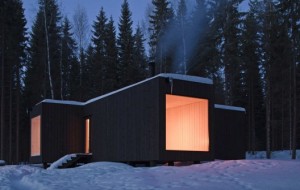CASE STUDY: WALL HOUSE – by FROHN & ROJAS, Site: Santiago de Chille
TEXT: PRIMITIVE FUTURE – by Sou Fujimoto
This Project is a design investigation into how the qualitative aspects of the wall as a complex membrane, structure our social interaction and climatic relationships and enable specific ecologies to develop. This project breaks down the “traditional wall” into a series of four different layers with private and public spaces slipped into the house. It’s worked inside out with the outer layers more connected to the outside whereas the inner most layers are more detached. All layers are connected at the same time detached. It gives us lucid and yet a experience of profound diversity.
Sou Fujimoto talks about what a good / interesting architecture is, for example “ Can something without a purpose or something which exceeds the purpose be built?” Nest and Cave both being the primal state of architecture is still different. Nest is something which is hopitably designed to be a functional place. Whereas Cave is something that naturally occurs. Cave with its unexpected expansions and intersting contours is interesting to live.
Architecture should be practiced in gradation. The author like to see architecture along the line of transition. Between Black and White there are endless shades of grey. The process/ transition / In-betweens is what interests the author.
A house is a room and city is a house. Its really interesting to see house has a heirarchy of rooms and city is a heirarchy of buildings. It could be seen viceversa, house as city and city as a house. The fusion of inside and outside.
Relational logics are given between the advanced architecture and the environment. Its focused on the perceptive phenomena originated among the domestic spaces and elements annexed to these.
The six kinds of relational logics are:
Positional relations, system by illation; Metaphorical relations, systems by analogy; Atmospherical relations, systems by interaction; Intangible relations, systems by correlation; Disturbed relations, systems by alteration; Environmental relations, systems by energy.
To Break free from the illusion to control nature and understand the complexity of nature. To have a better combination of nature, culture and information. Environmental relations helps us to understand that in order to tame nature we should connect with it.

